#weijin period style
Explore tagged Tumblr posts
Text

The Ruqun (襦裙)refers to a 2-piece Hanfu where the top and skirt are separated. This style first started appearing in the Eastern Han Dynasty and became popularized during the Weijin + Northern/Southern Dynasties.
Top: Ruqun collars opened wider than the Zhiju and Quju from previous dynasties. The sleeves could be wide and loose, or more form-fitting to the arm. At the waist, a thick piece of fabric formed a "belt" which could be tucked into the skirt or over top.
Skirt: The skirt was pieced together using long, rectangular pieces of fabric, gathered at the top using a "belt". The drape was loose with a slight flare at the bottom.
Hairstyles: Hairstyles during this period also started becoming more complex. Different updos and hair ornaments started to be use, in contrast to the past when the hair was mostly tied into a simple bun with minimal accessories.
Personally, this is one of my favourite styles of Hanfu ^-^ The separation of the top and skirt allows for a lot of custom mix-and-matches, and the overall shape gives the illusion of longer legs (in reality I'm stumpy and short, lollll). This style is also flexible during different weather, you can add layers underneath without it showing so even in fall/winter it's wearable.


#hanfu#汉服#china#中国#chinese hanfu#culture#history#fashion#clothing#historical clothing#襦裙#魏晋南北朝#ruqun#weijin#northern southern dynasties
84 notes
·
View notes
Photo

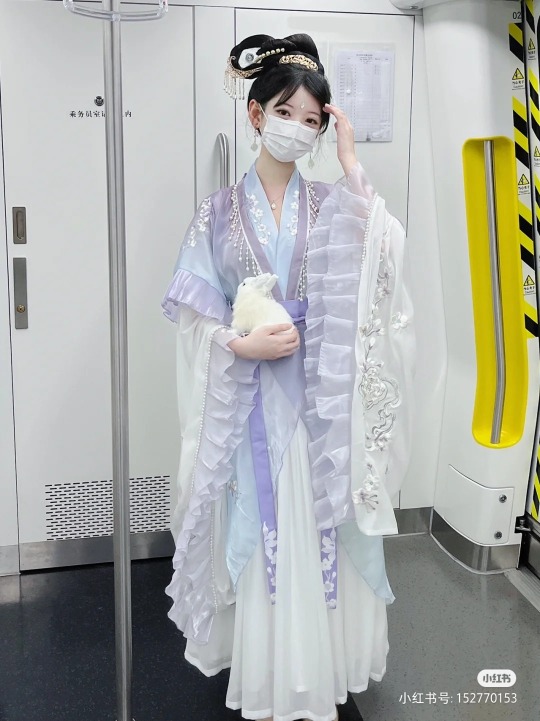


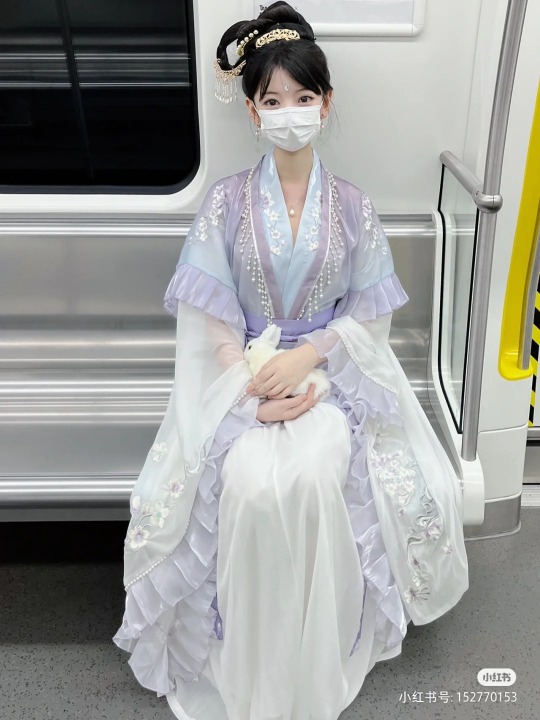
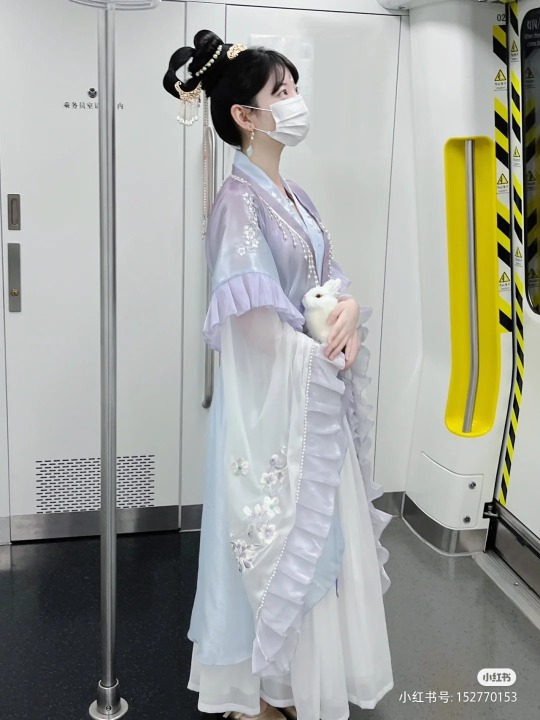

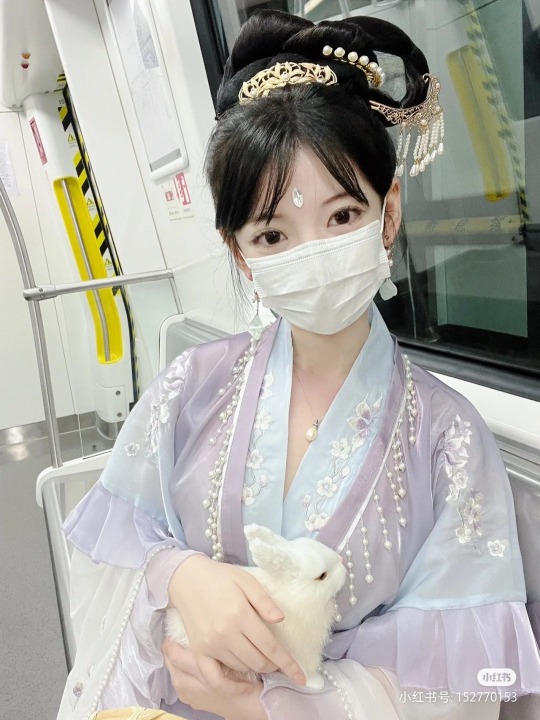
chang’e (chinese moon godess) taking subway with her jade bunny by 澜溪原创汉服
505 notes
·
View notes
Photo








chinese hanfu for men in historically accurate style of ming dynasty by 云归处传统服饰
#china#fashion#hanfu#chinese fashion#ming#because I personally prefer hanfu in more flowing style of weijin period tang and song#I've barely posted a Ming Dynasty men's hanfu before that incident against Oldxian#so in the future I will post some historically accurate men's hanfu in ming style#including the accessories to help distinguish similar clothing in the other culture to avoid misunderstanding. ❤#I have to say I post girls more often lol
471 notes
·
View notes
Note
I really apologize but i have lots of question about 褙子... first of all, was pibo worn with it ? I only see pibo with Tang style. Secondly, can 褙子 be worn over cross collar ru or only on top of 抹胸 ? And lasty, I saw 褙子 worn under what looked to be like another 褙子 but with slightly shorter sleeves ??? Can you stack them up like that, or was that jacket with 3/4 sleeves not 褙子 ?
No no don’t apologize...
Generally speaking, pibo can go on generic Tang and Song styles, although people usually don’t wear a pibo with untucked parallel collar shan, which I think because people who wears these style usually like to put a more “daily” look so pibo was not used, but you can put on pibo if you like. Also historically, I don’t think pibo was fashionable in Song dynasty anyway although they might appeared in some court dresses (usually called 霞帔/Xiápèi). Like I have only seen a handful of paintings and statues with pibo, and these artefacts aren’t really from Song dynasty (the paintings are most likely from the Five Dynasties and Ten Kingdoms period, and the statues, although sculpt in Song dynasty, they are figures of immortals in a temple).
Due to the long history of the term used, 褙子 could means several things... I prefer to called these parallel collar top with full collar 衫shan, because it is a generic term refers to all unlined tops made without a separate waist. 褙子 for me means a couple specific things, as shown as these couple of slides I made last year.

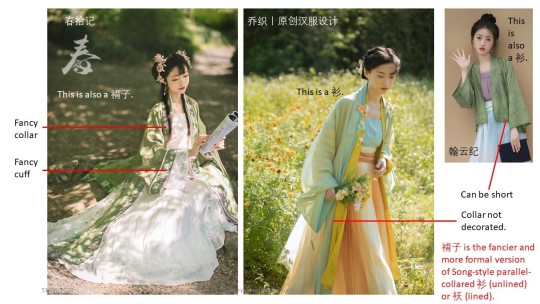
However, 褙子 can also be referred to other things.
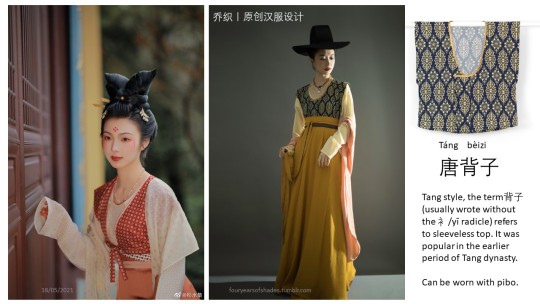

Is changgansi beizi perhaps the ‘jacket with 3/4 sleeves’? 黄晟墓褙子 from Southern Song actually only reaches the wrist as well, but it is not as oversized as changgansi beizi and the sleeves usually was a bit flared.
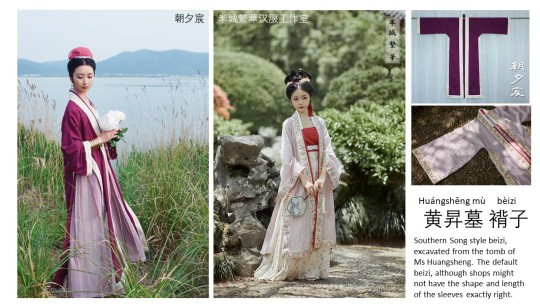
褙子 is like a jacket so it could stacked on top of other tops or moxiong depending on the weather. Technically speaking there should always be another layer between moxiong and beizi, but whatever. There isn’t a strict rule for it today.
Proper Song-style cross-collar shan is kinda rare in the market today, especially for woman (because I don’t think any was excavated). Most of the time the “cross-collars” are parallel-collar shan.


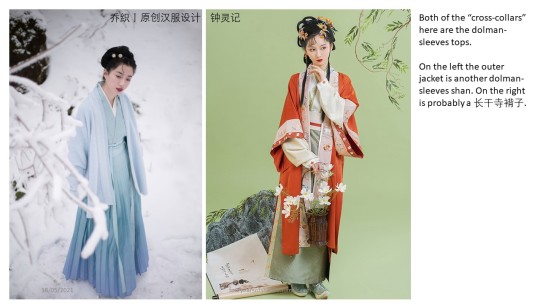
Some types of generic woman cross-collar shan.
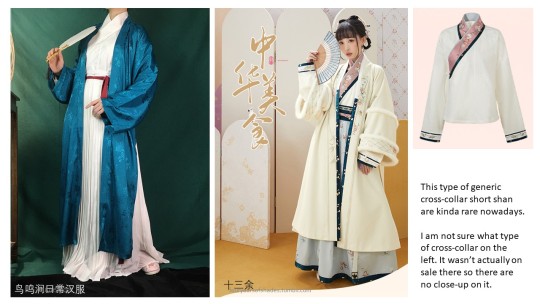
Below are a couple of examples of men wearing 长衫/直裰 with beizi.

Woman could wear them like this today too.

I re-read the question again and realized you said cross-collar ru. Technically speaking when ru was popular beizi hadn’t appear yet. The followings are example of cross-collar ru worn parallelly.
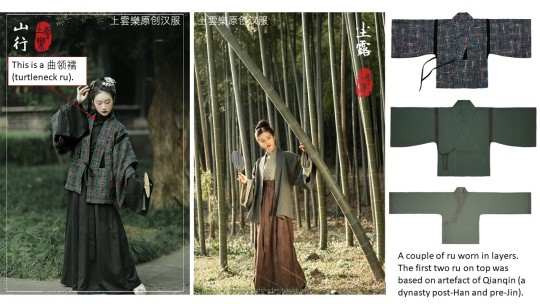
There also is the possibility of Weijin-feng style plus a parallel-collar jacket, which was fashionable back in 2017/2018, but the jacket would most likely be a 大袖衫/Dàxiùshān. simply due to the sleeve size.
Some of my older post regarding the difference between daxiushan and beizi (x); between daxiushan and pifeng (x); and between daxiushan, beizi, and dachang (x).
I hope this answer your questions. I hope my answers is satisfactory. Do tell me if I make mistakes in the answer.
tl;dr:
Pibo usually don’t go with beizi, but you can wear one if you like.
Beizi could refers to many things due to its long historical used. In the beginning it refers to top that have short-sleeves or no sleeves, then it refers to long shan with decorative collar and cuffs.
Beizi (parallel-collar shan) is like a jacket, it can go directly on moxiong or stacked on top of other tops.
160 notes
·
View notes
Photo






Traditional Chinese hanfu in weijin魏晋 period style by 临溪摄影
2K notes
·
View notes
Video
youtube
Chinese hanfu hair style of Weijin period 魏晋风汉服发型教程
253 notes
·
View notes